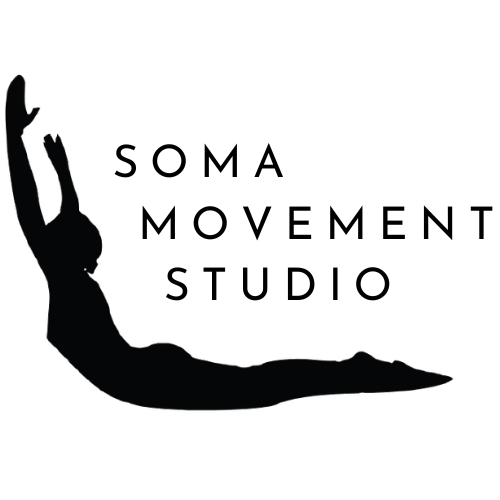We are going to geek-it-out for this post and talk a bit about how movement happens and conversly, what happens to our bodies when we don't move normally.
Let's talk about something simple first; elbow flexion and extension. The ulno-humeral joint (humerus is the upper arm bone, the ulna is one of the two forearm bones, the one on the side of your pinky) of the elbow is a simple, hinge joint. Your biceps contracts, the elbow flexes (think bicep curl). Your triceps contracts, your elbow extends.
What we don't normally think about is something called reciprocal inhibition. In order for your elbow to flex when your biceps contracts so you can do a biceps curl, your triceps ALSO has to SIMULTANEOUSLY relax and lengthen to allow the motion to happen. When you then go to extend the elbow and your triceps contracts and shortens to pull your arm straight, the biceps has to SIMULTANEOUSLY relax and lengthen to allow the elbow to straighten/extend. The signal from your brain to the relaxing muscle is referred to as reciprocal (opposite) inhibition. In otherwords, the antagonist muscle is inhibited to allow the agonist muscle (the muscle causing the movement) to contract.
So, what happens when reciprocal inhibition does not work normally. We will use another pair of agonist/antagonist muscles as an example. Say for some reason, your pecs (pectoralis major/minor) and chest muscles got really tight from working on the computer. The muscles that oppose the pecs should be receiving a signal to relax as a result of the constant signal the pecs are receiving to stay tight. So, your rhomboids, muscles of the back that function to bring the shoulder blades together towards the spine, get a signal to relax. What happens next? The pecs continue to tighten, pulling your shoulders further forward, sending more reciprocal inhibitory signals to the rhomboids to relax, which in turn allow the shoulder blades to slide outwards and forwards, eventually leading to rounded, tight shoulders. More on posture in a future post.
Now for the subject of this blog post. The psoas major is a relatively long muscle that connects the lumbar (lower) spine to the femur (thigh bone). The function of the psoas is traditionally thought to flex the hip, though this action has been called into question by modern anatomists and kinesiologists (people who study how muscles move) and now it is thought to have more of a stabilizing effect on the lower back/lumbar spine. In some people (actually lots of people), the psoas muscle is shortened and tight.
The psoas muscles is really hard to isolate and work on eiher through exercise or bodywork. It lies super deep relative to other muscles so any type of psoas massaage is usually uncomfortable and painful because the therapist has to get WAY deep in your groin and belly to access the fibers of the psoas. Even if you can get to the psoas muscle with massage, the psoas is ofen very tender to the touch so psoas massage is uncomfortable to put it mildly. Many muscles function in concert with the psoas so it is near impossible to isolate the psoas through exercise.
However, the psoas can be accessed and relaxed indirectly through reciprocal inhibition. Try this. Lie down on your back with your feet a little more than shoulder width apart and a low pillow or mat supporting your head. Have a clock or a stopwatch near by that you can see without moving or sitting up. Now that you are comfortable, squeeze/contract your tush as hard as you can and hold it for a minute. That gluteus maximus needs to be contracted to the MAX. This is easier said than done. If you are really squeezing hard, your butt should really be burning by 15 seconds. After 30 seconds, re-engage your glutes, squeeze harder. You should really be hating the fact you found this article by 45 seconds. When you reach a minute (if you can), you can relax.
Get up now and walk. If you really did a good job squeezing your glutes, your psoas should have gotten a strong inhibitory signal from your brain, and you should have a wonderful, open feeling through the front of your hips as you walk. This is the reciprocal inhibition psoas release.
This open feeling will go away unless you then follow up this posas release with some kind of gentle, coordination movements to take advantage of your newly discovered, lengthened psoas and learn how to control it so it does not get tight again. Whatever you do, do not try and "strengthen" the psoas once you've released it. You're poor psoas has been tight and contracted for who knows how long, it finally gets a change to relax and rest so they last thing it needs immediately after being released is vigorous exercise.
At SOMA Movement Studio, we use Hanna Somatic Movement to gain control of the lengthened/relaxed psoas (more on that in future posts) followed by equipment/spring-assisted Pilates to condition and use the psoas without it going back into its shortened, tight state (notice I did not say strengthen). Otherwise, use the reciprocal inhibition psoas release whenever you want that open feeling in the front of your hips.
The first time I tried the reciprocal inhibition psoas release, I made it to 40 seconds of glute contraction and had delayed onset muscle soreness (DOMS) the next day. After a week or two, I was easily able to go a minute or two of glute contraction. I do this exercise while brushing my teeth with my electric toothbrush, which pauses every 15 seconds, which I use as a cue to contract my glutes harder. This is a wonderful and gentle way to release/relax the psoas and other hip flexors without having to undergo uncomfortable and invasive massage/bodywork.


